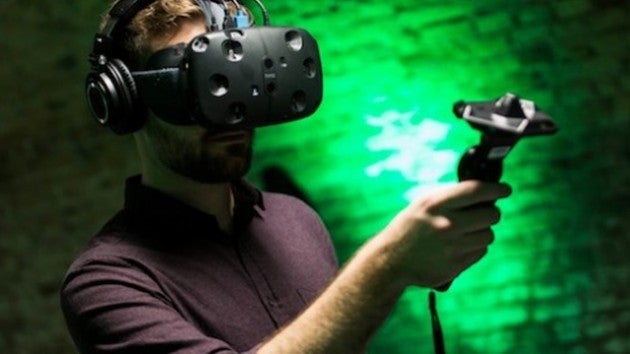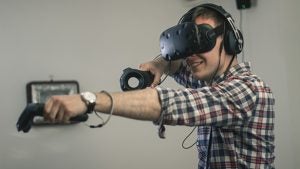This new LCD tech could change the face of VR as we know it

VR still hasn’t tipped the balance into mainstream adoption, but it’s on the verge of being handed one of the most significant updates in its development.
Continuing the trend of rapidly advancing screen technologies, researches have suggested that pixel densities could triple in the coming years.
Although this will have notable benefits in the living room, it’s not your next TV, but smartphones and a future wave of virtual reality headsets that are set to be the biggest winners.
With VR headsets placing small screens just inches in front of the user’s eyes, a high pixel density is needed to ensure content appears smooth and detailed.
The new tech that could make that possible is blue-phase LCD displays. Unlike traditional LCD panels that feature three sub-pixels – one red, one green, one blue – the blue-phase displays are able to quickly transition between the three colours fast enough to trick the eye into seeing just a single hue.
Related: Best VR headsets

That has the benefit of being about to do with the traditional filter and reduce the space needed for each pixel, allowing far more pixels to be packed in.
“Today’s Apple Retina displays have a resolution density of about 500 pixels per inch,” said Shin-Tson Wu, research led at the University of Central Florida’s College of Optics and Photonics.
“With our new technology, a resolution density of 1500 pixels per inch could be achieved on the same sized screen.”
Blue-phase LCD displays were originally demonstrated back in 2008 but researchers have only now been able to reduce operational voltage enough to make it a viable option.
According to Wu, the futuristic displays, which could be ready for prototyping next year, could help take VR to the masses.
“This is especially attractive for virtual reality headsets or augmented reality technology, which must achieve high resolution in a small screen to look sharp when placed close to our eyes,” the scientist said.
Until then, well all have to make do with being able to see individual pixels in our VR sessions.
WATCH: Best TVs at CES 2017
Would a higher resolution screen tempt you into taking the VR plunge? Let us know below.

